Content by: Manan Chawda, Elvin Joshua Pinto
Design by: Mariyah

What is Ureterosigmoidostomy?
Ureterosigmoidostomy is a surgical procedure that creates an alternate pathway for removing urine in individuals who have undergone bladder removal surgery (Cystectomy). (Fig. 1)

Kidneys filter blood and produce urine, which then passes into the urinary bladder via ureters. The bladder stores urine until it can be excreted. During ureterosigmoidostomy, the ureters are disconnected from the bladder and attached to the sigmoid colon. As a result urine and stool is eliminated from the same opening, i.e., through the anus.
The procedure is now clinically rare due to complications such as hyperchloremia, renal failure, urinary infection, and adenocarcinoma at the ureterosigmoid anastomosis site.
Asynchronous bilateral anastomosis site sigmoid colon cancer after ureterosigmoidostomy: A Case Report
A man underwent total cystectomy and ureterosigmoidostomy at 40 to treat his bladder cancer.
- When he was 69, he presented to the hospital with bloody stools and elevated tumour marker levels (carcinoembryonic antigen (CEA), 9.7 ng/mL). By colonoscopy, an elevated lesion at the right anastomosis site of the ureterosigmoidostomy was detected (Fig. 1). Endoscopic resection was performed, after which tumour marker levels decreased (CEA, 6.8 ng/mL). The pathological diagnosis was intramucosal adenocarcinoma.
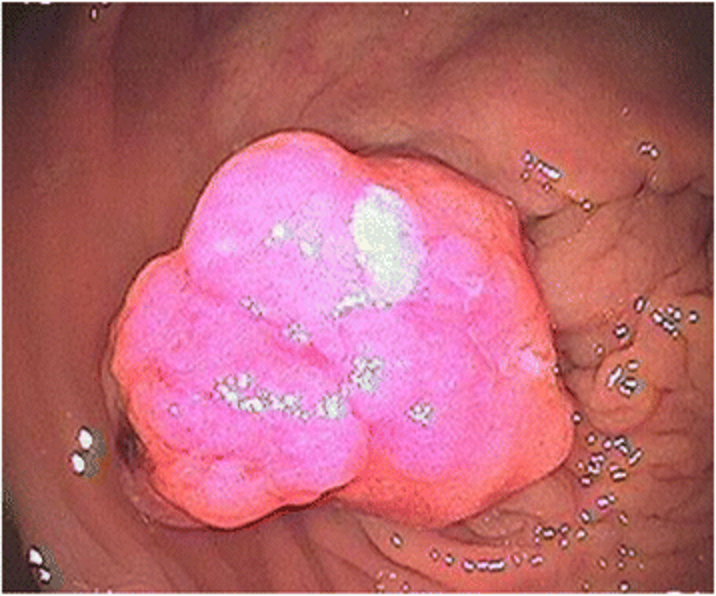
- During a follow-up visit 7 years later, the patient’s CEA level was elevated (25.3 ng/mL), and CT revealed a mass lesion at the left anastomosis site of the ureterosigmoidostomy.
- On admission, his breathing was deep and continuous (Kussmaul rhythm) commonly observed in metabolic acidosis. Blood tests indicated renal dysfunction, acidosis, and hyperchloremia (creatinine: 1.72 mg/dL; pH: 7.252; chloride: 112 mEq/L); this was a result of the prior ureterosigmoidostomy which caused reabsorption of urine into the colon.
- The patient had bilateral hydronephrosis after ureterosigmoidostomy, predominantly on the right side, which progressively worsened each year.
- His right renal function was compromised after the endoscopic resection 7 years prior, and kidney function had been monitored during follow-up hospital visits.
- Renal failure upon admission was attributed to urinary flow obstruction by the tumour.
On emergency admission, a left nephrostomy was performed, which improved the renal dysfunction and acidosis.
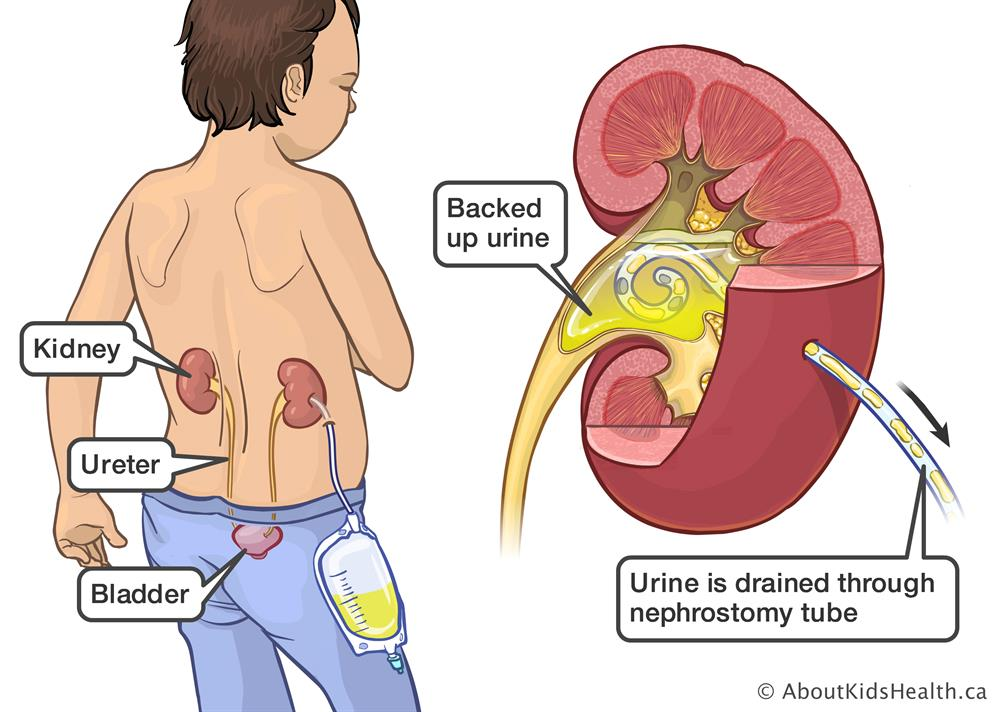
- CT revealed mass lesion at the left anastomosis site and left pyelectasis.
- Colonoscopy detected an elevated lesion at the left anastomosis site.
- Biopsy revealed well-differentiated tubular adenocarcinoma and papillary adenocarcinoma (Fig. 2).
- Immunostaining was CDX2-positive, indicating adenocarcinoma from the intestinal epithelium.
Conclusion: The patient had sigmoid colon cancer at the left ureterosigmoid anastomosis site.
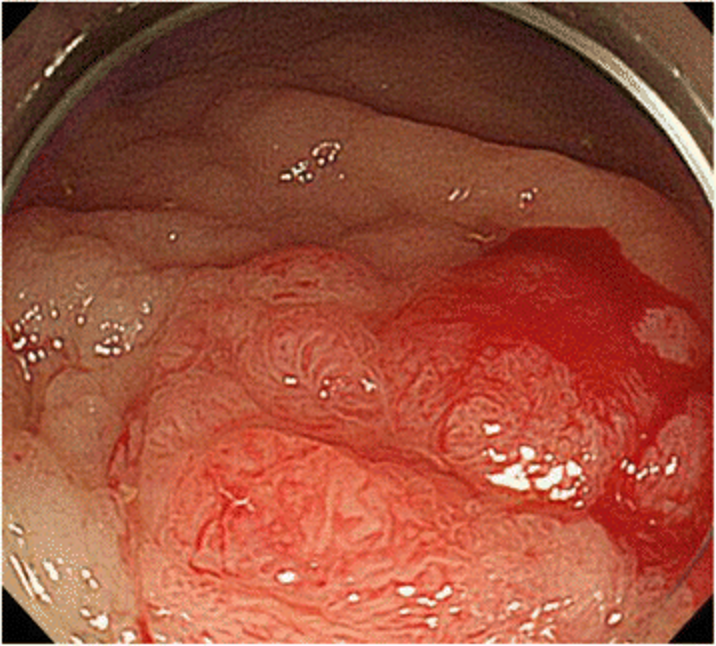
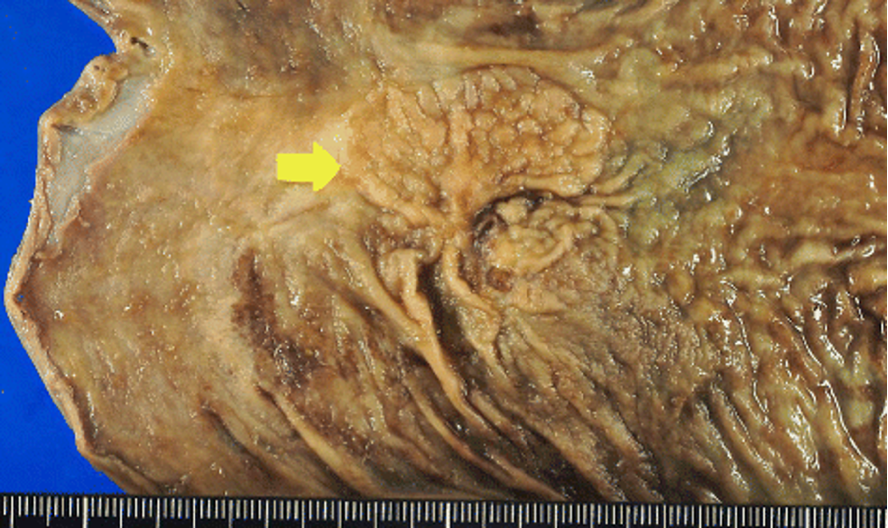
Sigmoidectomy and ureterectomy were performed. (Fig. 5)
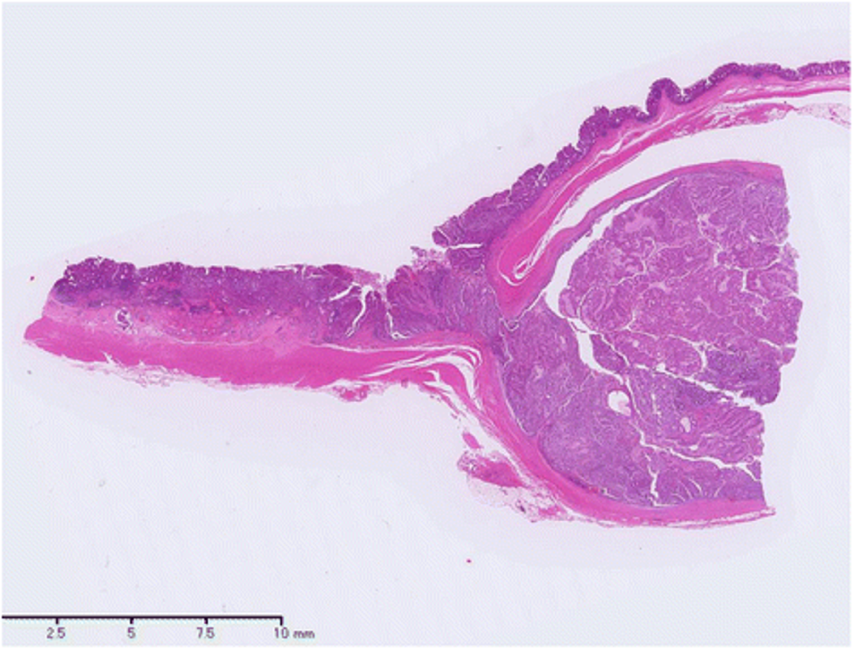
Pathology revealed adenocarcinoma in the elevated lesion at the ureterosigmoid anastomosis site and left ureter (Fig. 6).
Associated terms:
Hydronephrosis: A condition in which one or both kidneys become distended/ swollen as a result of build up of urine within.
Nephrostomy: In cases of a blocked ureter, an opening is made directly from the kidney to the skin and a nephrostomy tube is passed to the renal pelvis allowing urine to be drained directly.
Pyelectasis: Build up of urine in the renal pelvis.
Sigmoidectomy: Removal of the sigmoid colon.
Ureterectomy: Surgical excision of all or part of the ureter.
Adenocarcinoma: Cancer that forms in the glandular tissue, which lines certain internal organs.
References: https://wjso.biomedcentral.com/articles/10.1186/s12957-016-0934-1